We have just purchased a house built in 1954. When we pulled up the carpet we found that the oak flooring under the carpet is cupped. The joints are tight, but every board is cupped. The finish is wax rather than polyurethane and shows little wear. My guess is that the floor has always been under carpet. Can the ridges be sanded out or is this floor toast? Thanks.
Discussion Forum
Discussion Forum
Up Next
Video Shorts
Featured Story
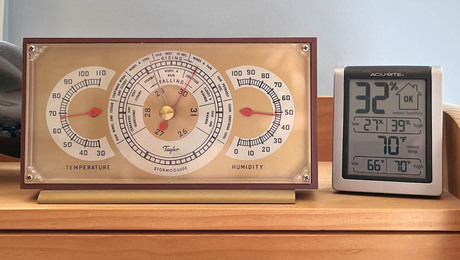
Source control, ventilation, and filtration are the keys to healthy indoor air quality. Dehumidification is important too.
Featured Video
How to Install Cable Rail Around Wood-Post CornersHighlights
"I have learned so much thanks to the searchable articles on the FHB website. I can confidently say that I expect to be a life-long subscriber." - M.K.
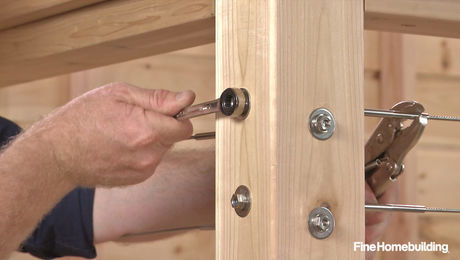









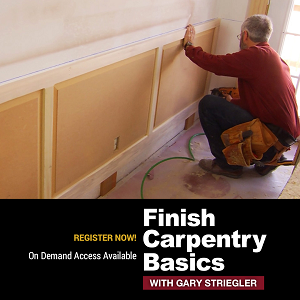
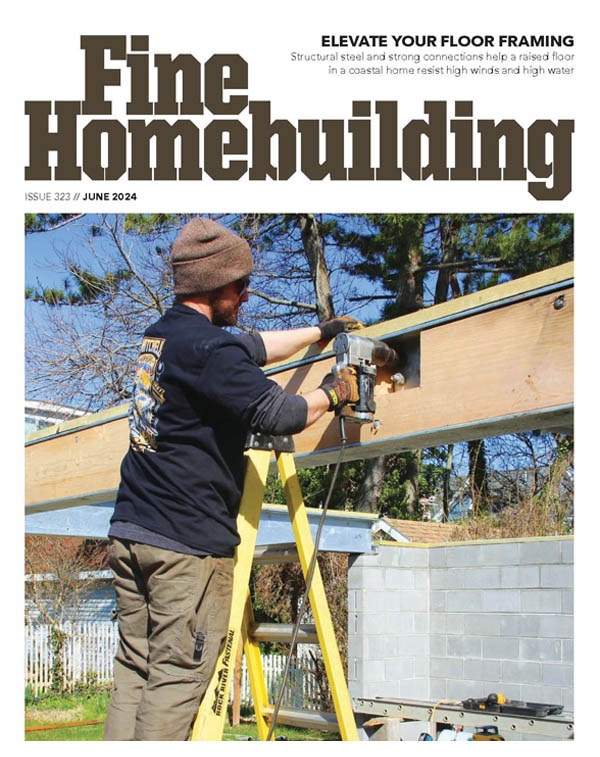

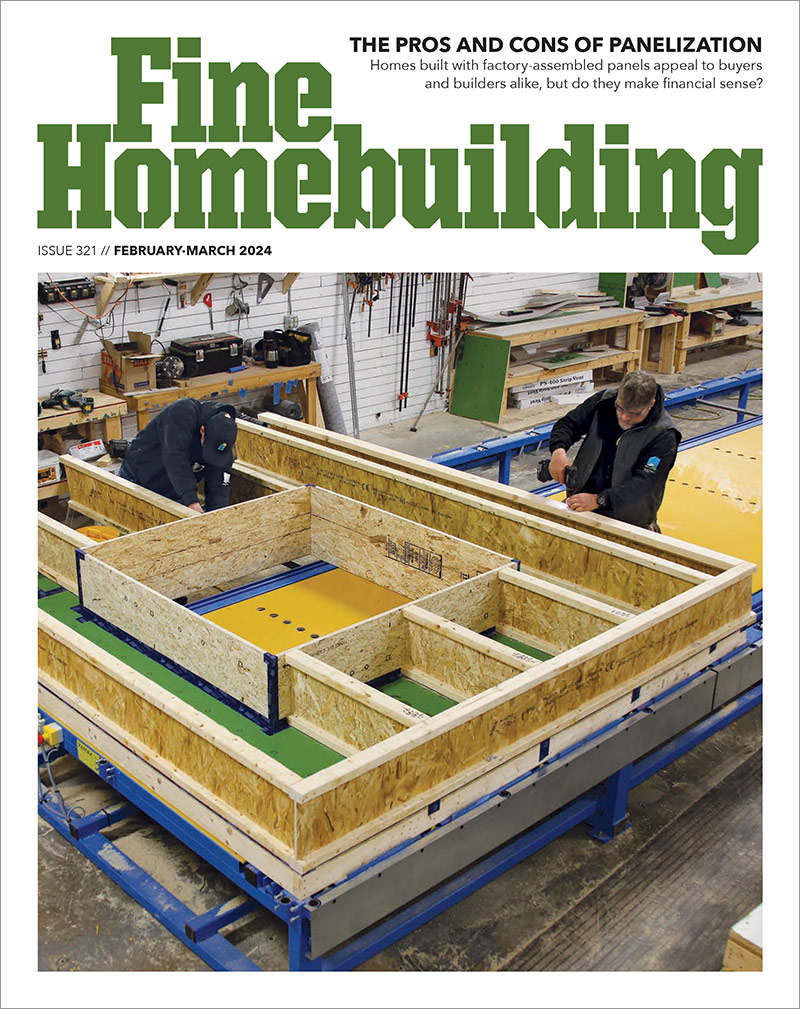
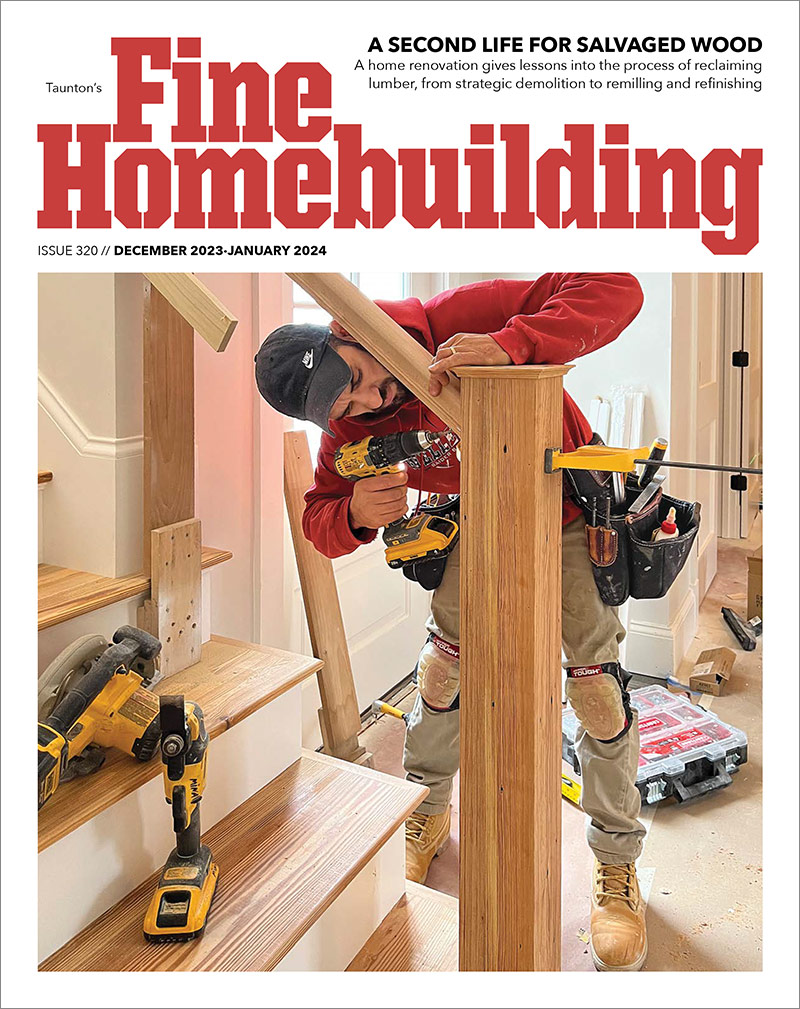
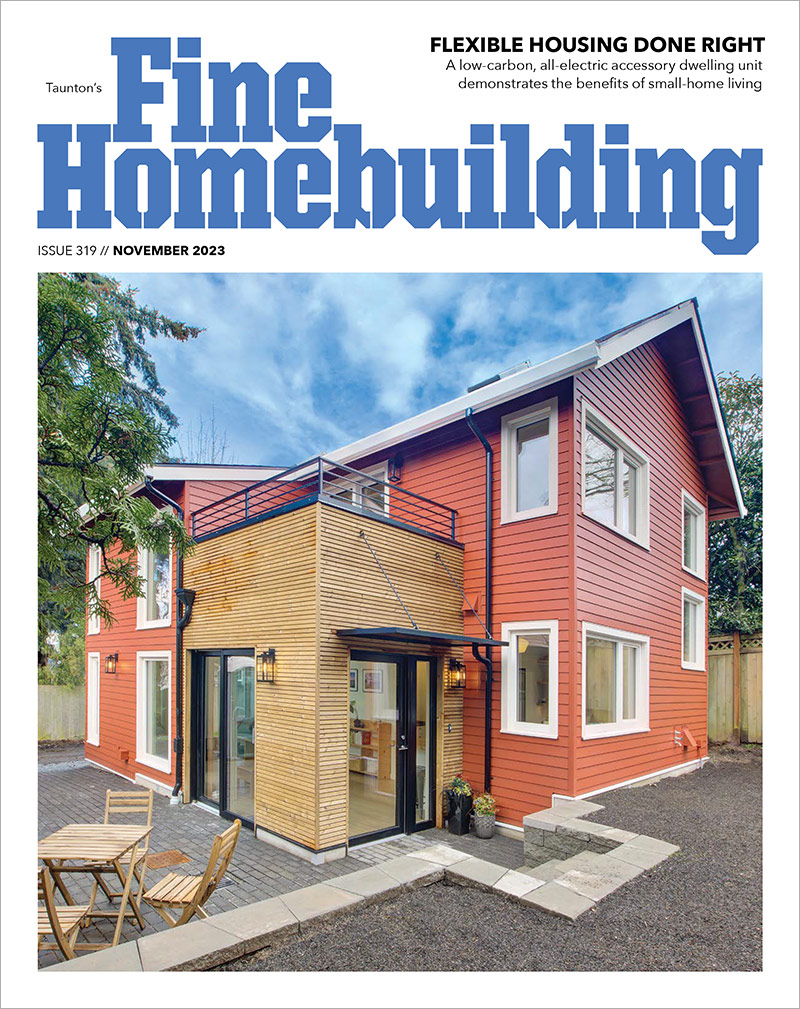

Replies
It is highly unlikely that your flooring is toast.
If it would have been cupped that bad, you would have not been able to walk on the carpet without falling over.
A sanding should return your floor to it's original glory and you will never want to cover it with anything other than compliments.
Gabe
Why is it cupped?
If you grind it down will it be stable?
Come on, it wasn't installed cupped, you have to deal with that first.
Ditto Gabe's comments. If you refinish it yourself, begin sanding in a X pattern with the floor sander before sanding normally.
Ok, how did they sand it cupped? That may be a look I am after.
I'm starting to be curious......
Are you old enough to sit at the table yet?
If you and Ian don't like this forum, how about you do as you say you will do and go.
It takes a real hypocrit+e to complain about everything here then just continue being disruptive.
There's a million floors out there that, for whatever reasons, were covered with carpeting. Most carpets are notorious for holding moisture and causing cupping.
The carpet is gone now and the flooring will easily sand down to it's original grandor.
Gabe
GabeOne year laying cork tile doesn't make you an expert on timber floors
IDG.
I know you're from merry old england and all that but I do wish you would learn to read the english language as well.
I never said I laid cork tiles for one year.
Bad enough you can't count now you can't read.
Gabe
so how long was it to make you an expert??BTW, I thought you had me on 'Ignore'?
Edited 4/14/2002 7:42:07 PM ET by IanG
Gabe, the only reason we seem to be butting heads today is I am bored and there is no one else to pick on. I like both you and Ian, and all that so called grief was on another thread. If you ask me you two should bury the hatchet and come out pals. Maybe Ian started it, I don’t know. Am I a hypocrite? Nopes, I am a total pita all the time. I see you two as people that have different answers to the same question, when you talk it out we all come away better for it.
As for my age I would bet you don’t have a hell of a lot of years on me, but seeing as I started banging nails before I could walk we might have about the same time in the trenches. The difference is I have always been in the trenches, and moisture problems in a house don’t go away because you pull some rug. Furthermore, Ian nailed this one, there is moisture coming from below, think cupped.
Now, it all goes away with a sanding? You've been away from my playground for too long.
Edited 4/14/2002 8:03:21 PM ET by Qtrmeg
Does this logic of rugs cupping floors apply to throw rugs, or only wall-to-wall?
I'm really concerned bec i just refinshed my floors and now i'm scared to death i could inhibit the breathing capability of the poly by putting my wool rug in front of the sofa.
My 2 cents ..............not to worry with a rug. imho the pad of wall to wall carpeting is the main cause of the cupping. The pads are urethane foam, sponge rubber, sometimes rubberized jute. Traps moisture pretty well and makes it tough for the floor to dry out. Enjoy your rugs and floor and thanks for your and Ian's refinishing thread ....a good one.
Edited 4/15/2002 8:52:34 PM ET by jc
I have been refinishing floors now for 3 years. That hardly makes me an expert, however it's all I do now. I recently refinished a first floor which was partially covered with wall to wall carpeting ( 3 bedrooms). The areas which were covered were slightly cupped, the areas left exposed (living and dining rooms) were not. I can only guess that the carpet and pad held moisture over the 20 years it layed on the floor, resulting in the cupping.
Refinishing floors is pretty disruptive for the customer. I could hardly have them move all the furniture to the garage for say 2 months and tell them to call me back when the floor uncupps itself. We just sand 'em flat, finish and go.... and say a little prayer on the way down the driveway.
Edited 4/14/2002 8:48:21 PM ET by LUVMUSKOKA
Yes muskoka lover,
you've got it right on the head.
Everytime you steam clean a carpet, everytime you even spill water or whatever liquid on the carpet, everytime you use a wet cleaner, everytime you introduce moisture into the house, it's absorbed into the carpet and eventually affects the wood hiding underneath.
Not rocket science but seems to be above the heads of a few here tonite.
Gabe
Must be a full moon somewhere....
Gabe,
Wood is convex toward the highest moisture side. If you spill water on a board, it will cup down. If it's wetter on the underside, it will cup up, as to hold water. Remove moisture from under this floor, and no amount of carpet will make it curl. If the moisture isn't removed, removing the carpet to replace it with poly will be an even worse scenario for cupping.
What you're recommending is the equivalent of fixing a flat tire by adding more air instead of removing the nail and repairing the cause.
Of course, if you have more hot air than you know what to do with...
Splintergroupie, Wood Nymph
Splinter,
Where did you find this science? How many floors have you refinished?
Just wondering.
I dunno man......she got a shop. Must know more than me......but.....
while all I've done to refinish a floor is call the floor guy......we constantly ran into this in the LR or row house rentals we were rehabing.
Did about 20 of them over the course of about 6-8 years. Pulled the old carpets and the sections under cover waved at ya. Owner was tired of buying new carpets so they were sanded flush and finished.
The last one was over 3 years ago.......and no call backs yet. And we've done more work for him in the meantime....so I'm sure it woulda been brought up if tenents were tripping all over the place.
These units were about 70 or 80 years old. Most of the carpets looks like they were too old to date! Pads were reused many times, I'm sure.......so those floors sat under the carpets for many years......I'd guess 20 to 30 yrs minumun. LR floor were over unfinished basements all those years.....so that's probably where the moisture came from....but gone when we finished into living space.
The floors ain't gonna lay themselves back down flat. Handle the moisture....if there is a problem....and sand them flat. It's a house....things move. Jeff * Jeff J. Buck/ Buck Construction/ Pittsburgh, PA *
2nd Generation Buck Const, 3rd generation Craftsman
'course, another possibility on old low-end stuff is that it wasn't the driest when it was originally squared and the cupping is due to loss of moisture (?). In either case, if it doesn't move after leaving it open for a couple of days and wasn't obviously damp, then it can probably be sanded and sealed without it ever moving enough in the reverse (edges down) direction to cause excitement. OTOH, if the floor was fairly new and badly cupped, then I'd be in the "gotta fix it first camp" .
Phill Giles
The Unionville Woodwright
Unionville, Ontario
I'm refinishing a floor right now. 625 sq. ft. of 60 year old white oak 2-1/4" face. 1 bedroom has been carpeted for over 30 years, the rest of the first floor has been kept open. Customers moved all the furniture into the garage last weekend (7days ago) and went on vacation. Carpet was taken up in that 1 bedroom last monday (6 days ago) The entire floor is flat save for that 1 bedroom. I put an 8' level across the floor and see a 1/16 inch of daylight at the edge of nearly every board. A real bear to sand flat. After the first few passes it is real evident of the cupping as the orange shellac and varnish telegraph the low spots and looks like a striped football field.
just let it sit....it'll straighten itself out. Might even sand itself...never know......give it time.
Just like crooked studs.......those walls will flatten out...just give it time. It's all wood....wood drys, right? Jeff * Jeff J. Buck/ Buck Construction/ Pittsburgh, PA *
2nd Generation Buck Const, 3rd generation Craftsman
Jeff,
you mean that all those crooked twisted studs that I covered over the years are all straigth now!!!!!
Man you made me feel better. I've always been wondering about that. Kinda like the little light inside the refrigerator, I'm still not sure it does go out when you shut the door. I'm not an engineer so there's no way for me to figure it out.
Work safe brother,
Gabe
Well, golly, i told you i was the Wood Nymph. What more is there to say?
The science here is boggling my mind. Take a nap and think about what moisture does to a board. The carpets add moisture?
Sorry to give you the bad news, but Splints, Ian and Q have it right. I have been in the wood floor biz for 24 years. Here in So. Cal I have sanded many floors that had carpet over them, and it has been rare to find one cupping. There could be a moisture problem under this gents house that is keeping the moisture level of his subfloor at to high a level. Or the crawl space ventilation could be poor or none at all. An electric fan may need to be installed to move the air under the house and out. Either way, the cupping comes from below the finished floor. If this floor stays stable at the current cupped level for a couple of months, one could say that it is stable at this configuration. Assuming that, refinishing the floor and re-waxing as it was before could maintain a flat surface even though the cupping of the boards is still there. In this case GM is right. Polyurethaning the floor would probably bring back some more cupping though, because more moisture will be absorbed into the wood and not breath out as before. GW
Greg,
Not that I would ever question your 27 years in the floor biz. You and Ian have probably forgotten more than most of us will ever know about hardwood floors. I have been to Ian's site and his floors are incredible.
The conditions in So. Cal. are a far cry from the conditions here in the East. Cupped floors under carpet are common in this area (West. Pa.). As Jeff Buck pointed out in an earlier post, He worked on a rental property where every unit that had carpeted hardwood floors experienced cupping. I've seen cupped floors in apartments on upper floors. So where is the moisture coming from? The apartment below? The worst cupping is found near radiators, steam boilers are still used to heat a lot of the old buildings around here. And I'm sure the old plaster walls absorb moisture like a sponge.
We experience high humidity levels most of the year. Hell, if it's not snowing or melting then it's raining. The weather man celebrates low humidity days here like the 4th of July. I will admit that most basements in older homes here have damp foundations. High clay content in the soil is the main culprit and dampness is lived with. If I told all my customers to fix their damp basements before I put a machine to their floor I wouldn't be in business. I've seen too many cupped floors under carpet to know carpet and pad are playing a huge part in this.
I accept your reply, but waiting for the floor to acclimate to the new condition of no carpet and pad is a must before sanding and finishing. Two months at least. Polyurethane would not be my choice unless one wants to sand this floor again next year. By the way, is it raining today? OK Gabe, your right too. GW
Greg I'm not right. I may be right, thought.
Gabe
Greg,
Thanks for your advice. I guess I'll take the risk as I'm coating the floors tomorrow with Bona Mega. The room is small, 13X 12, worse goes to worst, I'll be back there in a year to redo.
No rain today but yesterday evening the sky opened up and hailed just as I was 1/2 done with cutting the grass for the first time this season. Guess you guys in So. Cal. don't know about the ritual of the "first mow of the season".
Interesting options I never thought of>>>
1)"The wood will never go back to it's original state, sand and be happy."
2)"We just sand 'em flat, finish and go.... and say a little prayer on the way down the driveway."
Sounds like the guy from #2 knows a bit more about wood than the guy from #1. I would also bet, from the tone of the responses, #1 has serious wood issues, both in swelling and dryness.
I could go on, but there isn't much to learn here about fine home building anymore. (except for Greg, funny how that 24 years of experience led him to put all the available facts together)
There's a lot to be learned, but you have to be able to quiet and listen to learn.
You can take a simple fact, make it complicated enough that the DIYs will be intimidated enough to hire it out and voila..everyone wins except the home owner.
A good judge starts by being a good lawyer first. You have to be able to understand wood before you can make judgement calls as to whose right or wrong.
It's not my house or money, so it's no skin off my nose if my advise is not taken......but on the other hand it's not yours either...so it's too easy to make cheap shots, you won't be paying for it.
So if you don't mind, don't rate any of these posts, you're not qualified to do so and it's not beneficial to anyone other than your ego.
Gabe
Gabe, it isn’t about being right or wrong, and you might try listening as well. Re-read your input of wisdom on this one thread, I see posing and insults, backtracking and adjustments. You have a lot to offer, but you have a serious hair across your ass when it comes to being questioned about anything.
I suppose you could never be wrong, I suppose you have learned it all. Well it must be nice, and I have to compliment you, but Greg or Ian would be the man I let into my house to finish floors.
Show me the backtracking.....
Explain to me how how a 3" wide piece of hardwood that's cupped, for whatever reason can go back to it's original state by itself.
I promise I won't hurt your feelings or insult you.
Gabe
Gabe,
One of the calls that I have recieved over the years is the dishwasher overflow causing mild to severe cupping; to the point of seeing the blind nails. If it is over a raised foundation, I have always told the client to just wait two months and the floor will lay back down flat again. I tell them if it doesn't, call me back and I will come out and look at it. I have never had a second call back on that subject. If the water is no longer present and the wood floor resumes its original moisture content before the overflow, it will go back to its original form. I called the client back on the one job where I could see the blind nails due the severe cupping a few months later, just to see what happened. They said that it went back down. I was amazed on that one. Of course, I was only a couple of years in the business. GW
Greg,
Would you not agree that there is a difference between cupping from a recent spill that is cleaned up immediately and cupping that occurs over the years underneath carpeting?
What we're discussing here is the cupping under the carpet.
Have you ever seen it go back?
Gabe
The backtracking is there, it just isn't as easy to find as the insults.
Wood will tend to find a place it is comfortable, due to the milling and grain, but when you have an entire floor that is cupped you should at least look into the possibility that there may be a moisture issue. Do you think sand and run is the best advice you can give your homeowner pals? Do you think all carpet holds moisture? If this floor had one sand left in it would you be so free with sand and run? This is tight and cupped, wax finish, there are things you can do before you sand.
In this case I would be concerned and investigate, not pull a workorder out of the book. The devil of the whole thing is you may be right, but I think only barely at best.
As far as hurting my feelings? Nah, but I was getting jerked that there are these packs running around drawing blood off of each other at every chance they get. And ya, I know that goes both ways, but the value of info gets lost.
I didn't think you could find a single instance of backtracking...
Who said sand and run?
Gabe
Edited 4/17/2002 8:23:49 AM ET by GABE_MARTEL
"If this floor had one more sand would you...." Yes, I would sand and finish as usual. One caveat however. I use an orbital sander which in this case would only take the hump off and the finish in the valleys as well as the old chatter. This would still leave one more sand. The owners would get a lifetime of enjoyment out of the floor and someone else 25 years from now would be faced with replacing it.
I have yet to see or hear of valleys where there were once humps.
By the way I don't sand and run. I live in a small town, have all the work I can handle and enjoy having a good rep. I'm not going anywhere, if a customer has a problem in the future I'm easy to find and will correct it. In 3 years I have never had even one call back.
I appreciate all of the responses. The floor in question is in southern California a few blocks from the beach. It does seem to be flattening out a little since the carpet was pulled up two weeks ago, however it still looks like corduroy. We are going to go ahead and pull up the rest of the carpet. I looked under the crawl space and the main line to the sewer goes underground at the end of the house without the carpet. Unfortunately, I peaked under the carpet at the other end of the house and the floor there looked better. I would suspect that there is a moisture problem. I would have prefered the carpet explanation, but I'm glad that I paid the extra $25 for the drain to sewer coverage on the homeowner's insurance. Following all of the preceding advice, we plan to fix the drain, install a vapor barrier, and wait a few months before sanding.
As an observation: about fifteen years ago a beer-brewing roommate had a beer explosion while we were at work and the 25 gallons of beer that wound up on the floor created a bunch of beer filled canoes. The cupping on those boards resolved within a few days. I'm not sure that the direction of the cupping does correspond to the source of the moisture, but perhaps there is a difference if the problem is chronic.
I appreciated the oiled floor refinishing advice. I got talked into polyurethane on the last floor. It looks nice until you go and scratch it by doing something stupid like walking on it. Oil and wax are far more repairable when the inevitable accident happens.
Have a flooring contractor check the moisture level of the floor in six weeks. He must have a meter that can prod the upper 1/4 inch and the lower 1/4 inch. When they are the same moisture level, you can refinish. Oil based polyurethane is the way to go though. You will find it difficult to keep up with the water spots that will arise with a wax finish. You can repair polyurethane finish scratches easily with a piece of 120g sand paper and a small paint brush. Let me know what city you are in and I will give you a flooring referral. It could be me if you are no further North than Newport Beach.
Gabe,
The only time that I see flooring that has stayed cupped is when it is a natural occurance where the moisture level of the subfloor is constant. Thereby transfering that moisture into the floor at a constant rate to keep the floor stable in a cupped posture. This usually happens within a few months of the floor being installed. After a year the floor can be refinished and it will stay flat at that point even though the whole board is still cupped on the interior. I don't believe that a cupped floor is a serious problem to a homes structural integrity. If the moisture is that bad the floor will buckle anyway. It only takes a moisture level in Oak to reach 11% to show cupping. That is only 3% higher than normal. There can only be a 4% difference between the subfloor and the flooring to cause flooring not to move. If the subfloor is at 16% and the floor is at 8% when installed, it is probably going to cup. That's some dry info for the bored readers. GW
What!!!!!!!!!!
You must live in a unique part of the world. The readings and the subsequent results that you're quoting would get a laugh out here.
Today our temperature was a humid 31 degrees celcius, we will now have a hell of a thunderstorm and the weather will go back to near freezing temperatures at night. Some days we can hear a house talk.
We will experience your humidity differences within a 24 hour period an more days than not.
If your theory were correct, our floors would be popping off the deck a week after installation.
BTW of course cupping floors are not a structural issue.
Case in point.
This is an older home, right?
The hardwood floor would not have been installed as a underlayment for carpeting, right?
This means the hardwood floor would have been installed for quiet a few years "uncovered", right?
Might even have had a refinishing or two over that period, right?
Not likely that the hardwood was cupped when exposed, right?
Now carpeting covered the hardwood for years, right?
Moisture is now damaging or cupping the wood, right?
Two things work on the wood during this period. One is the wood absorbing moisture on it's unprotected side, right? Two is the wood expanding due to absorbing moisture and the resulting pressure between the strips of wood, right?
Now let's add time and it's effect on wood. If you bend a piece of green lumber into a shape and you release it, it goes back to it's original shape, right? If you leave this same piece of green wood in a bent shape for a decade, it won't return to it's original straightness, will it?
Moisture makes wood behave the same as green wood would.
A fresh spill will work wood the same and drying it will allow it to return to most of it's original shape. Add time to the equation and the woods ability to return will slowly diminish.
Not rocket science, only common sense.
Gabe
Gabe,
I am sure you know more about the nature of wood products than I know just by vertue of the fact that you have had contact with it longer than I in many more elements of construction. I only know wood floors. As far as this floor in question, I really don't care how or why it got to the state it is in. A couple of months of dry out time, check upper and lower moisture of the boards to equalize, and refinish. Then enjoy it for the next 15 years with two recoats at 5 and 10 years. As to whether an old wood can lay out flat again vs. new flooring, I don't know. It all starts from below though, prevailing thinking. But I have an opinion that excessive heat (heating and air conditioning, excessive dry, cold weather) from above the floor can also create cupping by drying the upper strata of the board removing moisture that is not lost from below. GW
What about the dog bed post? Did I misinterpret or were the floor boards 'crowned/ cupped/ humped' towards the moisture. And only in that area. And remained stable for the 5 years he lived there after the floors were refinished.
Could it be that we're all correct? If I sand and coat a cupped floor (or sand and run as some would suggest) and don't hear back in a year am I wrong? If you let the floor acclimate for 2 months and then refinish are you right and I'm still wrong? Save for an obvious moisture migration problem like a flooding basement or crawl space, does it really matter why the floor cupped? It is what it is.
Greg, good point about buff and coat every 5 years. I notice from ads in the LA times that you guys really market that hard. Here in the East I witness that most people let the finish fail before I get a call. Do you have any experience with products like Bonas recoat adhesion system 'Bona Prep'? This is a product made specifically for padding and recoating prefinished floors. And this product leaves the original stain color in the floor, unlike sanding. The prefinished market cuts us out of 'sand on site' but these floors will eventually need to be redone sometime.
Highly unlikely you're right on this one.
First of all, like the rest of us, you don't know the specifics and you're not on site.
All we can do is go by the odds.
Odds are, we're right and you're wrong.
24 years experience only gives you an experienced guess. If you don't know that by now, you never will.
Give it your best advice and leave it at that.
Gabe
Definitely not an expert on this (not even close as am just a DYIer), but I have one counterexample in my personal experience. Had a house in California with W2W over strip hardwood flooring. There was a spot under the dog bed that was continually damp in the wintertime (from wet dog...). When we ripped up the carpet to get the floor refinished, the board were cupped with concave side upward (toward the moisture).
Rest of floor was fine, and after sanding (and building a dog bed with a bit of an air gap under it) all was fine for the remaining 5 years I was there.
Don
While on the surface you would think that moisure added to a finished wood floor from the top would cause inverted cupping. That's not how it works. The top is finished and the wood can not transpire or expand do to being sealed. The swelling will be greatest at the bottom of the boards. That is unless you have a massive plumbing failure, such as an icemaker line to a fridge, then the floor will literally stand on end.
Check to see that you do not have moisure penetrating from the bottom up.
If not... Run a dehumidifer for some time and rent a moisure meter to determine when to start the finishing process. If you try to finish a highly humid floor, the stain will flash after you seal the floor leaving off color hazy marks and guess what... you get to do the job all over again. Not to mention if you sand the floor while cupped it will evenually aclimate and you'll have an inverted cup or mounded floor. Be patient, wait for the right time, and do the job once.
"The top is finished and the wood can not transpire or expand do to being sealed"
A finish does not stop the exchange of moisture. It just slows it down. And I doubt that the finish is strong enough to resist the movement of the wood. It is was we would never see paint crack.
I have a book on paint based on the work by the US Forest Product Labratory. They compare test sample of bare wood and wood with 3 coats of oil paint (if I remember correct) on sides and edges. You can see they both react, it just take the finished board longer.
And moisture will equalize across the board between the finished and unfinished side.
Another thing that Hoadley (sp?) mentions in his book on wood is that in some cases the expansion from high moisture can cause the wood fibers to be crushed and then they won't go back to their orginal state when the excess moisture is removed.
If the board is 'cupping' the bottom of the board is swelling, therefore the moisture is coming from below.
If the carpet is adding moisture to the board, then the top of the board will swell, causing a 'hump'. This is so basic it shouldn't need stating.
If the floor hasn't started to flatten out by a week after the carpet is removed then it is pointless to sand and finish WITHOUT curing the moisture problem.
I'd rather do it right in the first place than rely on prayer.IDG.
What may being forgotten here is that the top of the boards have been finished, while the bottom, undoubtedly are not. The carpet and underlay will definitely act as a vapour barrier, causing the top to cup as the unsealed bottom of the t and g absorb moisture at a higher rate.
I suspect this is not a moving situation. Probably occurred years ago and stayed that way, just as steam bending a rib into a boat stays that way more or less forever.Alan Jones
I don't think there's any doubt that there's moisture there and as for the cupping of the timber going or not going once the carpet is removed that's easily seen.
What is certain is that if the moisture is coming from below, it should be dealt with before putting polyurethane coating on the timber because that is impermeable to moisture whereas the wax still allows it to breathe.Also if you sand the timber while it's cupped and it then flattens out the floor will look like cobblestones.IDG.
Don't want to get too technical with you, I know you're on medication so I'll keep it simple.
You're nuttier than a pecan farm.
The original poster never said that he had a moldy basement, he just asked about his hardwood floor.
The majority of the floor is flat sawed and all things being equal would cup with the rings.
However, the top would have several layers of varnish/pu and only the bottom would be subject to moisture penetration and subsequently causing the cupping effect.
Now Ian, I'm trying to prevent you from making a fool of yourself again. You've already built a 5 star hotel for 28 dollars a sq. ft and I'd hate to see you further humiliated.
Give it a rest, you need it.
Gabe
So now, without ever having sanded a single floor, you have become the world's expert on floor-sanding?
So far you've claimed to be a national authority on the artificial insemination of goats, ranted that you know better than the majority of Canadians what should be done about gun control, boasted of how you were going to mount a one-man legal campaign to overturn national laws, listed hospitals, refineries, airports, factories, hotels and office blocks as 'some of the things' you have built, told us you've carried out 'hundreds' of building inspections, laid cork floors 'for years', knew all about heating and ventilation and all while firing at least 1,000 rounds a week in target practice and running for Mayor.
(3% of the vote, wasn't it?)
Unfortunately, all you have to offer us in the way of proof are some photos of fairly bog-standard concrete slabs and a drive-by photo of an hotel.
You ought to return to skulking in the Heating Forum under an assumed name, but this time try Walter Mitty instead of LFred --- it suits you better.As for me, I'll put you on ignore -- and I won't miss a thing!!IDG.
Get a life...
Gabe
JX
If the boards are cupped and the joints are tight then the most likely cause is moisture coming in to the floor from below.
The source of this moisture should be eliminated BEFORE the floor is re-finished for two reasons.
If the floor is sanded flat while the boards are still concave then when the boards DO dry out, they will appear convex.
If an impermeable finish like polyurethane is applied to the surface of the boards while moisture is still coming from below the boards will become saturated and liable to rot. At the moment the wax is allowing the boards to breathe.
When you have cured the moisture problem, don't refinish the floor until the boards have dried out and are flat
Link
Point well taken. If there is a moisture problem, remedy it before refinishing. I do think the carpeting is the cause or at the very least, exacerbates the cupping problem. imho, the carpet and pad work to trap moisture in the wood floor. I've refinished several floors that were hidden under carpet for years. All were cupped to varying degrees and all were fine after refinishing.
JCIf the carpet is the cause then the floor should start to return to flat as soon as it is removedEither way, the floor should be flat (ie., dried out) before sanding starts.
IDG.
Edited 4/14/2002 7:38:20 PM ET by IanG
Can you spell the long form of bs?
I can't believe you ever worked in real construction. I think you're a cyber builder.
The wood will never go back to it's original state, sand and be happy.
Gabe